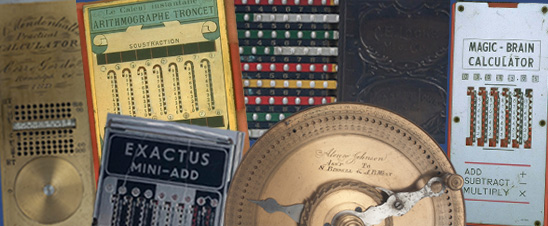By the 1920s, companies in the United States, Germany, and France manufactured inexpensive notched band adders. A firm in Marseille, France, under the direction of engineer E. Reybaud, sold this device from 1922 until at least 1930. This example was from the collection of L.
- Description
-
By the 1920s, companies in the United States, Germany, and France manufactured inexpensive notched band adders. A firm in Marseille, France, under the direction of engineer E. Reybaud, sold this device from 1922 until at least 1930. This example was from the collection of L. Leland Locke.
-
The metal adder and stylus fit into a red paper container. The adder has nine columns of digits and a zeroing bar at the top. Instructions indicate that the device came in two models that sold for 25 and 40 francs. This was sufficiently inexpensive that every member of a commercial firm could have such an adder.
-
Reference: “The Register,” Typewriter Topics, vol. 76 (September 1930), p.14.
- Location
-
Currently not on view
- date made
-
ca 1925
- maker
-
Reybaud, E.
- ID Number
-
MA.155183.25
- catalog number
-
155183.25
- accession number
-
155183
